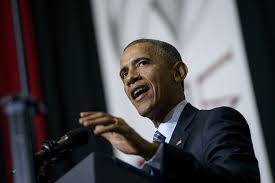President Obama’s Clean Power Plan called for cutting the country’s power plant emissions 30 percent from 2005 levels by 2030, setting different targets for each state. The proposal is the signature piece of President Barack Obama’s climate change policy.
Naturally the plan has been met with fierce opposition by the energy and manufacturing industries and some energy-producing states, and opponents have already vowed to challenge the regulation in court. But considering the Obama administration’s penchant for achieving the seemingly impossible - Obamacare, the Iran deal, preventing a second great depression- just to name a few, we might just witness a clean energy technological revolution.
Climate change is no longer an avoidable issue, weather systems are more extreme, glaciers are melting at a faster rate than ever before and floods are devastating the most vulnerable of nations like Pakistan and Myanmar. Provided that poor governance is to be blamed for the dismal level of preparedness for the floods in Pakistan and the subsequent losses we have concurred. But the bigger picture cannot be ignored that Pakistan has seen widespread and devastating floods for five years in a row, and climate change has a huge role to play in changing the normal weather patterns of the region.
The US and China have been the biggest contributors of greenhouse emissions, successfully warming the world to new levels. Many laws, bills and UN resolutions have been passed in the last two decades, but what has been missing is the initiative by the superpowers of the world to take responsibility and limit their dependency on fossil fuels. For them, cutting their emissions has been synonymous with limiting the economy. The Obama administration has shown that initiative, climate change being one of their central policies.
In November 2014, in a historic joint announcement with China, President Obama laid out an ambitious but achievable target to reduce greenhouse gas emissions in the United States in the range of 26 to 28 percent below 2005 levels by 2025, while China announced its intent to peak carbon emissions around 2030 and to double its share of zero-carbon energy to 20 percent. This historic deal much like the other commitments could just be something that fails to fall through in the coming times. But achievable targets set by both countries indicate a clear deviation from business as usual.
We can hope that the Clean Power Plan and the US-China joint efforts towards climate change will bring some relief to the devastations due to natural disasters in the global south. Our future is unfortunately, and by no fault of our own, heavily tied with their commitment to resolving the issue of global warming.
Wednesday, April 17, 2024
The Climate Change Threat

Pride and hype as F1 roars back to China after Covid absence
10:36 PM | April 16, 2024
No let-up in Karachi street crime incidents
10:35 PM | April 16, 2024
Stock market today: Most of Wall Street weakens again as Treasury yields rise more
10:34 PM | April 16, 2024
Muslim K-popstar Daud Kim buys land to build mosque in South Korea
10:33 PM | April 16, 2024
Punjab Stadium unavailability derails National Challenge Cup 2023 Final Round
10:28 PM | April 16, 2024
Political Reconciliation
April 16, 2024
Pricing Pressures
April 16, 2024
Western Hypocrisy
April 16, 2024
Policing Reforms
April 15, 2024
Storm Safety
April 15, 2024
Democratic harmony
April 16, 2024
Digital dilemma
April 16, 2024
Classroom crisis
April 16, 2024
Bridging gaps
April 16, 2024
Suicide awareness
April 15, 2024
ePaper - Nawaiwaqt
Advertisement
Nawaiwaqt Group | Copyright © 2024





